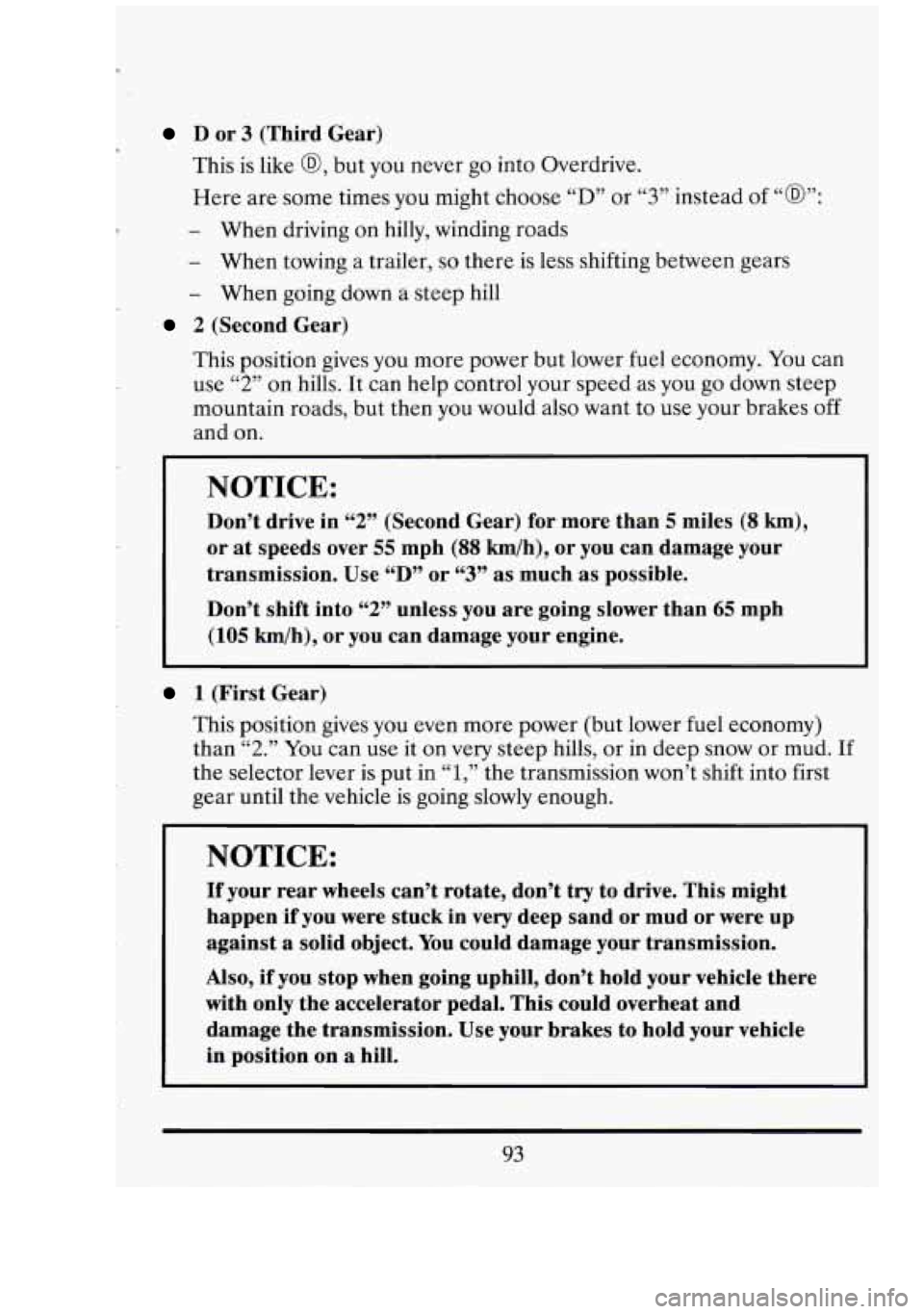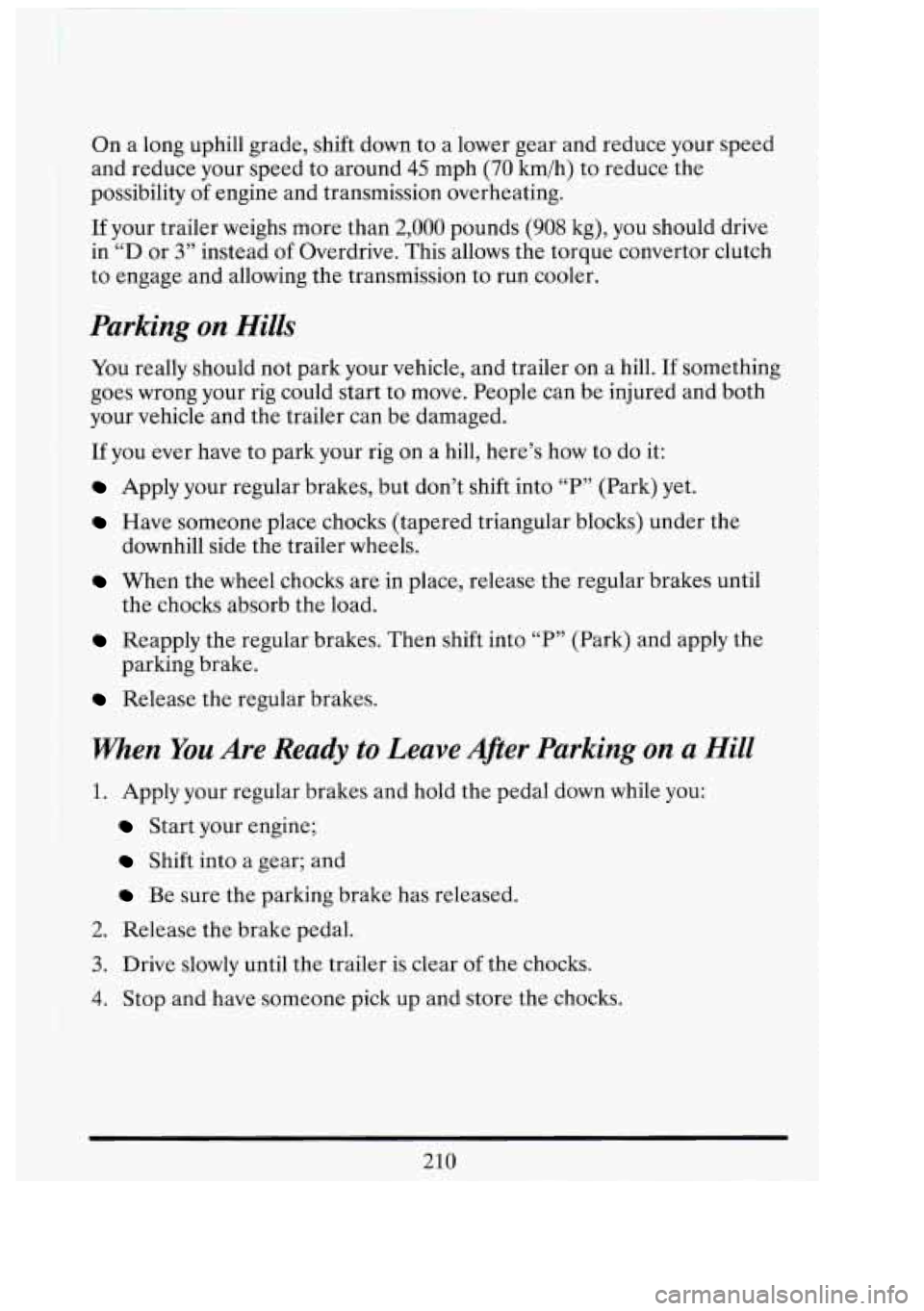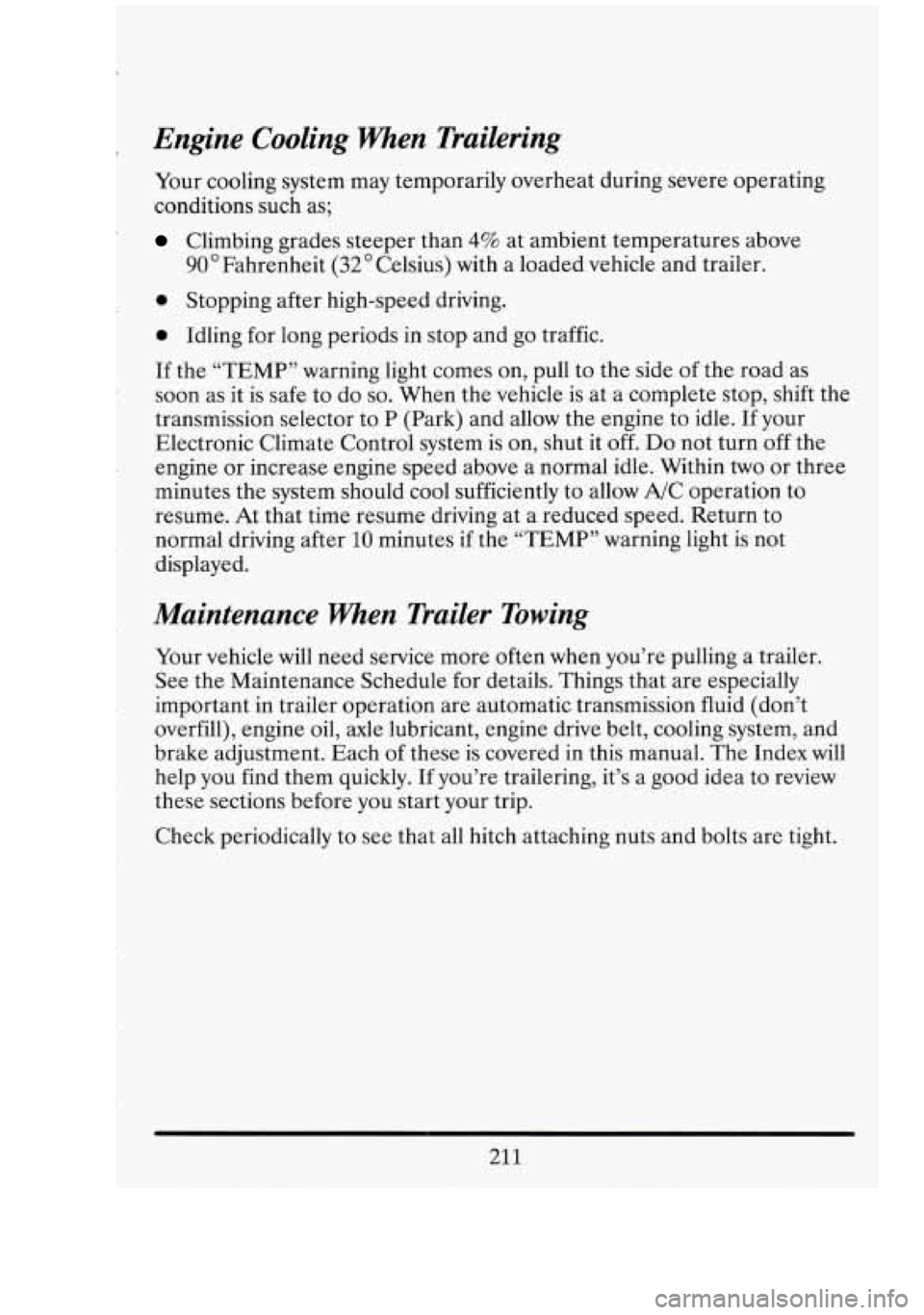Page 12 of 398

This Cadillac Manual is divided into major sections.
Introduction - How to Use this Manual .......................... lrn
This section tells you how to use your manual and includes
safety and vehicle damage warnings and symbols.
- Section 1 - Seats and Restraint Systems ..........................
This section tells you how to use your seats and safety
belts properly. It also explains the
“SIR” system.
Section 2 - Features and Controls ..............................
This section explains how to start and operate your Cadillac.
67
Section 3 - Comfort Controls and Audio Systems ................ 146 1-1
This section tells you how to adjust the ventilation and
comfort controls and how to operate your sound system.
Section 4 -Your Driving and the Road ......................... 166
Here you’ll find helpful information and tips about the
road and how to drive under different conditions.
-
Section 5 - Problems on the Road ............................. 212
This section tells you what to do if you have a problem
while driving, such as a flat tire, or engine overheating, etc.
Section 6 - Service and Appearance Care ....................... 245 n
Here the manual tells you how to keep your Cadillac
running properly and looking good.
For more information on “Reporting Safety Defects”, see Owner
Assistance, Page
5.
:d?irst Edition
Page 106 of 398

D or 3 (Third Gear)
This is like
@, but you never go into Overdrive.
Here are some times you might choose
“D” or “3” instead of “@”:
- When driving on hilly, winding roads
- When towing a trailer, so there is less shifting between gears
- When going down a steep hill
2 (Second Gear)
This position gives you more power but lower fuel economy.
You can
use
2 on hills. It can help control your speed as you go down steep
mountain roads, but then you would also want to use your brakes off
and on. (6 77
NOTICE:
Don’t drive in “2” (Second Gear) for more than 5 miles (8 km),
or at speeds over 55 mph (88 km/h), or you can damage your
transmission. Use
“D” or “3” as much as possible.
Don’t shift into
“2” unless you are going slower than 65 mph
(105 km/h), or you can damage your engine.
1 (First Gear)
This position gives you even more power (but lower fuel economy)
than
“2.” You can use it on very steep hills, or in deep snow or mud. If
the selector lever is put in “1,” the transmission won’t shift into first
gear until the vehicle is going slowly enough.
NOTICE:
If your rear wheels can’t rotate, don’t try to drive. This might
happen
if you were stuck in very deep sand or mud or were up
against
a solid object. You could damage your transmission.
Also, if you stop when going uphill, don’t hold your vehicle there
with only the accelerator pedal. This could overheat and
damage the transmission. Use your brakes to hold your vehicle
in position on
a hill.
93
Page 108 of 398
II
When you move out of “P” (Park) or “N” (Neutral), if your engine is
running, your parking brake should go off. If it doesn’t, you have a
parking brake problem and should have it fixed. In the meantime, you
can still release your parking brake. Just pull on the manual release lever,
as shown.
I NOTICE:
Driving with the parking brake on can cause your rear brakes to
overheat.
You may have to replace them, and you could also
damage other parts
of your vehicle.
95
Page 149 of 398
NOTICE:
Spinning your wheels when the “Tkaction Disabled” light comes
on can destroy parts of your vehicle .as well as the tires. If you
spin your .wheels
too fast while shifting your transmission back
and forth, you can destroy your transmission. When you’re
stuck., spin the wheels as little as possible.
Engine Coolant Temperature Warning’Light
This light tells you that
your engine coolant has
overheated.
If you have
been operating your
vehicle under normal
driving conditions, you
should pull
off the
road, stop your vehicle
and turn the engine
off
as soon as possible.
HOT COOLANT CAN BURN YOU BADLY!
In “Problems
on the Road,” this manual shows what to do. See “Engine
Overheating” in the Index.
136
3
n
u
n
141
i
Page 223 of 398

On a long uphill grade, shift down to a lower gear and reduce your speed
and reduce your speed to around
45 mph (70 km/h) to reduce the
possibility of engine and transmission overheating.
If your trailer weighs more than
2,000 pounds (908 kg), you should drive
in “D or 3” instead of Overdrive. This allows the torque convertor clutch
to engage and allowing the transmission to run cooler.
Parking on Hills
You really should not park your vehicle, and trailer on a hill. If something
goes wrong your rig could start to move. People can be injured and both
I your vehicle and the trailer can be damaged.
If you eve1 have to park your rig on a hill, here’s how to do it:
Apply your regular brakes, but don’t shift into “P7, (Park) yet.
I Have someone place chocks (tapered triangular blocks) under the
downhill side the trailer wheels.
When the wheel chocks are in place, release the regular brakes until
Reapply the regular brakes. Then shift into “P” (Park) and apply the
Release the regular brakes.
the
chocks absorb the load.
parking brake.
When You Are Ready to Leave Afier Parking on a Hill
1. Apply your regular brakes and hold the pedal down while you:
Start your engine;
Shift into a gear; and
Be sure the parking brake has released.
2. Release the brake pedal.
3. Drive slowly until the trailer is clear of the chocks.
iI;
n
Gi
I B
h I1
-1
l
U1
a‘ I
210
4. Stop and have someone pick up and store the chocks.
Page 224 of 398

Engine Cooling When Trailering
Your cooling system may temporarily overheat during severe operating
conditions such as;
Climbing grades steeper than 4% at ambient temperatures above
90’Fahrenheit (32O Celsius)
with a loaded vehicle and trailer.
0 Stopping after high-speed driving.
0 Idling for long periods in stop and go traffic.
If the “TEMP” warning light comes on, pull
to the side of the road as
soon as it is safe to do
so. When the vehicle is at a complete stop, shift the
transmission selector to P (Park) and allow the engine to idle. If your
Electronic Climate Control system is on, shut it
off. Do not turn off the
engine or increase engine speed above a normal idle. Within
two or three
minutes the system should cool sufficiently to allow A/C operation to
resume. At that time resume driving at a reduced speed. Return to
normal driving after
10 minutes if the “TEMP” warning light is not
displayed.
Maintenance when Trailer Towing
Your vehicle will need service more often when you’re pulling a trailer.
See the Maintenance Schedule for details. Things that are especially
important in trailer operation are automatic transmission fluid (don’t
overfill), engine oil, axle lubricant, engine drive belt, cooling system, and
brake adjustment. Each of these is covered in this manual. The Index will
help you find them quickly. If you’re trailering, it’s a good idea to review
these sections before you start your trip.
Check periodically to
see that all hitch attaching nuts and bolts are tight.
21
1
Page 237 of 398

NOTICE:
If your engine catches fire because you keep driving with no
coolant, your vehicle can be badly damaged. The costly repairs \
would not be covered by your warranty.
IfNo Steam Is Coming From Your Engine
If you get the overheat warning but see or hear no steam, the problem
may not be too serious. Sometimes the engine can get a little too hot
when you:
0 Climb a long hill on a hot day.
Stop after high speed driving.
0 Idle for long periods in traffic.
Tow a trailer.
I
If you get the overheat warning with no sign of steam, try this for a
minute or
so:
i3‘ I
1. Turn off your air conditioner.
2. Turn on your heater to full hot at the highest fan speed and open the
3. If you’re in a traffic jam, shift to “N” (Neutral).
window
as necessary.
If you no longer have the overheat warning, you can drive. Just to be safe,
drive slower
for about ten minutes. If the warning doesn’t come back on,
you can drive normally.
If the warning continues, pull over, stop, and park your vehicle right
away.
If there’s still no sign of steam, you can idle the engine for two or three
minutes while you’re parked, to see if the warning stops. But then, if you
still have the warning, TURN
OFF THE ENGINE AND GET
EVERYONE OUT OF THE VEHICLE until it cools down.
You may decide not to lift the hood but to get service help right away.
3
224
Page 239 of 398
I
The coolant level should be at or above the seam inside the surge tank. If
it isn’t, you may have a leak in the radiator hoses, heater hoses, radiator,
water pump or somewhere else in the cooling system.
NOTICE:
Engine damage from running your engine without coolant isn’t \
covered
by your warranty.
If there seems to be no leak, check to see if the electric engine fans are
running.
If the engine is overheating, both fans should be running. If they
aren’t, your vehicle needs service.
226
Pl i